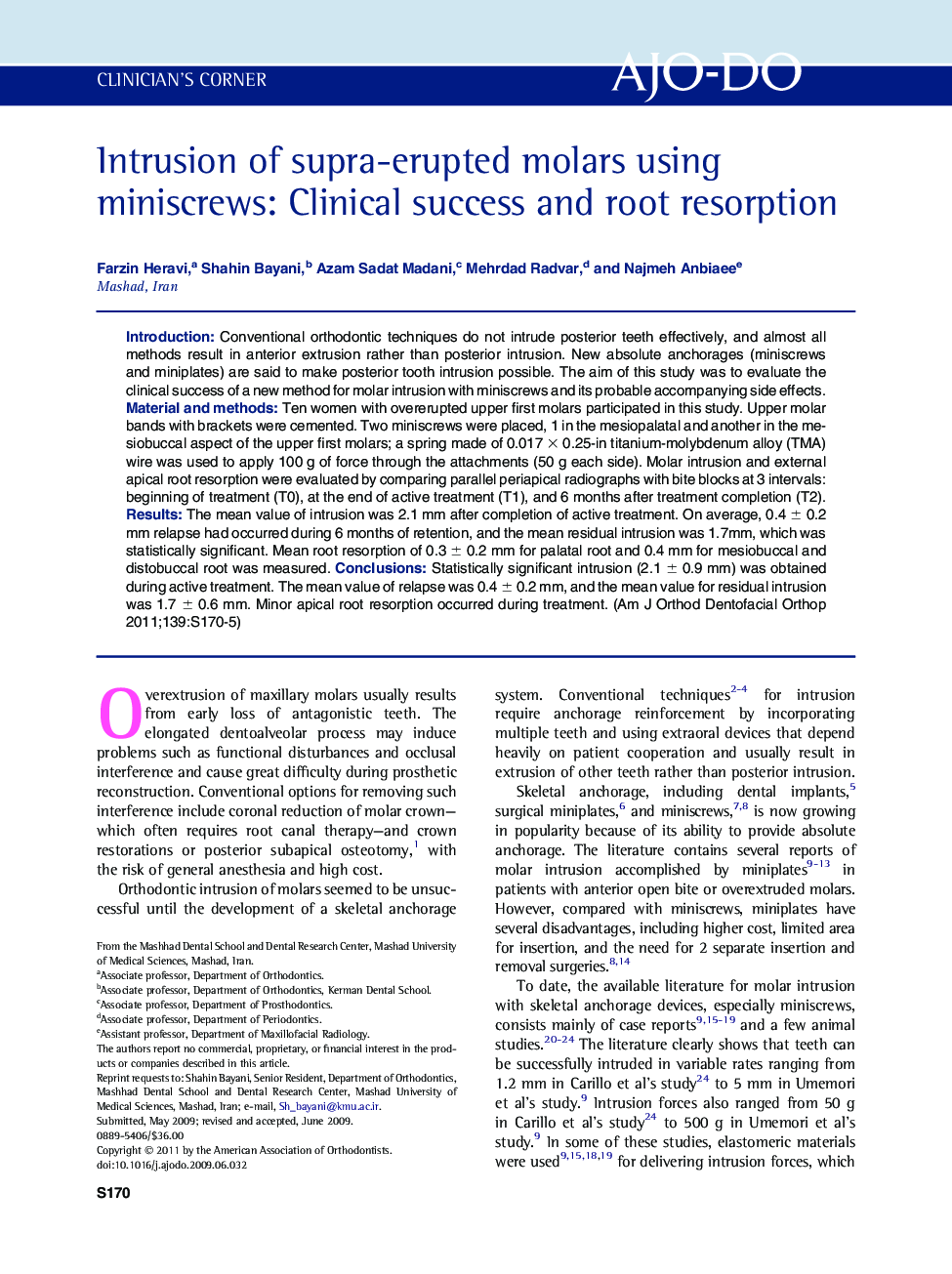| Article ID | Journal | Published Year | Pages | File Type |
|---|---|---|---|---|
| 3118977 | American Journal of Orthodontics and Dentofacial Orthopedics | 2011 | 6 Pages |
IntroductionConventional orthodontic techniques do not intrude posterior teeth effectively, and almost all methods result in anterior extrusion rather than posterior intrusion. New absolute anchorages (miniscrews and miniplates) are said to make posterior tooth intrusion possible. The aim of this study was to evaluate the clinical success of a new method for molar intrusion with miniscrews and its probable accompanying side effects.Material and methodsTen women with overerupted upper first molars participated in this study. Upper molar bands with brackets were cemented. Two miniscrews were placed, 1 in the mesiopalatal and another in the mesiobuccal aspect of the upper first molars; a spring made of 0.017 × 0.25-in titanium-molybdenum alloy (TMA) wire was used to apply 100 g of force through the attachments (50 g each side). Molar intrusion and external apical root resorption were evaluated by comparing parallel periapical radiographs with bite blocks at 3 intervals: beginning of treatment (T0), at the end of active treatment (T1), and 6 months after treatment completion (T2).ResultsThe mean value of intrusion was 2.1 mm after completion of active treatment. On average, 0.4 ± 0.2 mm relapse had occurred during 6 months of retention, and the mean residual intrusion was 1.7mm, which was statistically significant. Mean root resorption of 0.3 ± 0.2 mm for palatal root and 0.4 mm for mesiobuccal and distobuccal root was measured.ConclusionsStatistically significant intrusion (2.1 ± 0.9 mm) was obtained during active treatment. The mean value of relapse was 0.4 ± 0.2 mm, and the mean value for residual intrusion was 1.7 ± 0.6 mm. Minor apical root resorption occurred during treatment.
